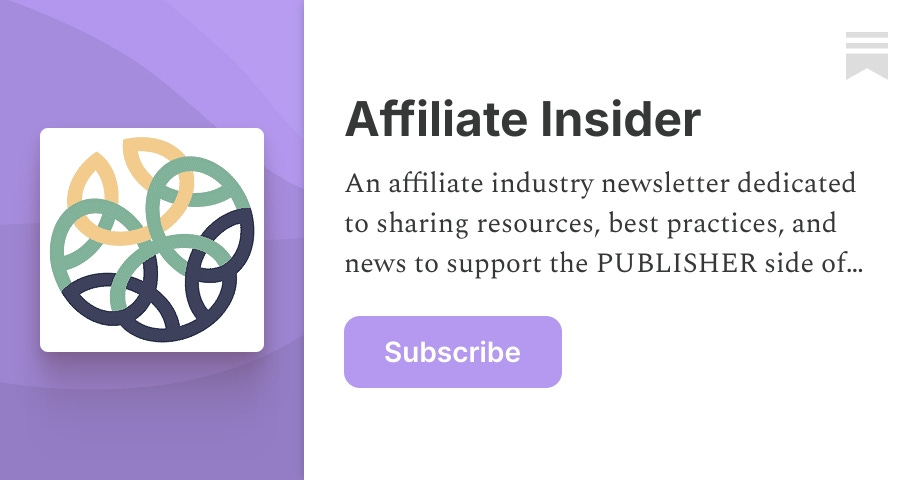- Content Forward: Thoughts from the Front Lines
- Posts
- Did we ruin the internet?
Did we ruin the internet?
Content goblins, alligator parties, core updates -- oh my!

Well, fellow content nerds. There’s never a dull day in content + SEO, and this week was no exception.
So here’s the rundown:
The Verge published a somewhat seething but highly entertaining piece blaming SEOs for ruining the internet.
Calling us pirates, sitting on our piles of money, content goblins who have ruined search forever, going to alligator parties; this is just the kind of entertaining fodder that we didn’t know we needed this week.

Content goblins about to ruin the internet.
Of course, SEOs haven’t ruined the internet.
Most of us are real content purists, trying to make the internet a better place. But, the nuances, history of search marketing, and what’s happening in SEO today were wholly lost on this writer.
The irony here is that this writer got to speak to some of the best and brightest in SEO, including a mostly reclusive Matt Cutts, a bonafide legend in SEO. I feel that the opportunity to write a real, honest look at the state of search, Google, and SEO was completely lost on this writer.
But, alas, this is our fate today. Most average people and Google users don’t know anything about search marketing, how it works, and how complicated the actual system is.
So, we keep going.
And, yes. We’re also in yet another Core Google Update as we speak. We will see where this lands us, but I hope to see some reversals from the past core updates.
Regarding the Helpful Content Update, I don’t expect to see sites that were hit there see improvements just yet. My guess is that once you’ve been ‘dinged’ as unhelpful in Google’s classification system, you get put into the Google penalty box (as Barry Schwartz mentions in this Clearscope discussion just this week).
This means that we might have to keep building into the void while we wait for our ‘penalty box’ time to be over. (Note that we’re not talking about official Google penalties here. That’s different.)
And, it’s not that easy to build into the void when you are seeing fresh content being indexed and ranked, yes, but behind ‘unfinished posts’ (yes, I saw this in the SERPs this week), the big boy brands, and Reddit.
These are the times we need to have grit.
And, so we keep going.
Last week, we discussed ways to think like helpful content creators. To recap:
The 4 Things You Can Do Today to Think Like a Helpful Content Creator
Do some research to find the questions your audience is asking.
Look and find the motivations and underlying feelings and experiences your people are experiencing.
Promise something helpful to your audience.
Check to make sure you’re delivering on your content promise. If not, there’s room for improvement.
And I told you I would dig into our content promises this week. I think we, as publishers, writers, and content creators, really owe it to our readers to deliver on our content promises.
Our Content Promises: Why It’s So Important
Content promises are our handshake with the readers, setting the stage for trust and authenticity. In a sea of online content, these promises help us stand out, build a real audience, and show that we're genuine in offering something valuable and helpful!
Our Content Mission Statement: The Big Deliverable
I’m such a proponent of having a clear content mission statement from the start. A lot of content marketers and SEOs seem to skip this step. Just start creating, but I would caution against that.
Why should we have a content mission statement in the first place?
A content mission statement aligns the editorial team with the core values and promises of the publication. It serves as the ‘north star’ for all who may join us on our mission to create. It can also provide an authentic deliverable to our readers on what they should expect from us.
Where can this content mission statement live?
We love proudly displaying our content mission statement on all About Us pages, but I’ve seen some dedicated Our Mission pages also work. Internally, I would ensure this is in the company wiki and company info so everyone in this publication knows what’s up!
Some Examples!
This site was one of the winners after the HCU update; they are doing better. I’m not saying it’s just because of the explicit promise, but you can see that we, as readers, know exactly what we’ll get when we come here, “I want to get you creating exciting dishes from whatever ingredients you find in your pantry.”
This is one of our publications, and it’s clear that our mission is to “test every subscription box and give you our real, first-hand review.” We also promise our readers that we’ll reveal everything that we unbox.” A simple, straightforward promise that we aim to deliver in everything we do here!
If you are struggling to write your own content mission statement, I recommend this resource from the Content Marketing Institute as a great starting point.
Our Editorial Promises
For me, editorial promises go beyond the initial content mission statement. Here is where we can tell readers our editorial policies and how we’re delivering on that main content mission statement.
For our Subcriboxer publication, we’ve created our documented Editorial Guidelines: A Guide on how we find, test, and review subscription boxes. This is where we show our readers how we do what we do here. These editorial guidelines also help our team, as this is what we always have to live up to.
Our Article Promises to Readers
We can also make and deliver promises to our readers at the article level. This past month, I wrote about this for our internal writing team. The BLUF: If we say we’re going to do something at the beginning of an article, we better deliver on that in the article!
In each article, we need to:
Identify the promise we’re making to readers. This is usually our response to their query or what we discuss in this resource.
We need to consistently deliver on that promise as the reader digs more. We must plan our headings and subheadings with this core purpose in mind.
Don’t deviate from our core promise. One thing about me that you should all know. I really try to avoid fluff at all costs. As creatives, we often go on tangents, but in great content, this can often be seen as fluff. Avoid that.
Living in that helpful content creator mindset means making honest, authentic content promises to our audiences and delivering on them! This is how we continue to build trust and stand out in this crowded digital space.
A Bonus Tip: How to Quickly Tell if Your Content is Helpful or Not
Ask Chat-GPT!
While we don’t use Chat-GPT for full content creation, I use it daily as my content and operational assistant.
Here’s a prompt:
I’ve written a comprehensive article on [topic query], and I need you to tell me if I have delivered on [content promise] here. You are a tough, comprehensive editor. Here is the article: [copy and paste the draft]. Please review each section and let me know if I deliver on that promise. Please let me know if I mentioned anything that seemed to deviate from this promise or does not need to be there. Also, please let me know if my commitment to the reader is clear. Thank you!
From this prompt, you’ll get some answers. I just did this for an article I was working on, and yep, Chat-GPT told me that I didn’t explicitly state my content promise in the intro. So, I fixed that.
If you try this, please let me know how it works!
I also like to ask follow-up questions, such as:
Here is my rewrite of the introduction. Does this work better, or is this more helpful? [add rewrite of intro].
These are all steps I do before the editorial. Of course, our editors will look for this and provide more valuable insights on what’s fluff and what’s missing, but it’s a fun way to review your work.
Things to Read, Watch, and Ponder
There’s a ton of news and things to read in SEO and content this week! Here are a few highlights:
The Verge hit an SEO nerve this week. This response is from Danny Goodwin at Search Engine Land.
And now to hear from our friends at Search Engine Roundtable…
Danny Sullivan published his thoughts on the Verge article as well. I’m glad he took the time to clarify his role in this, as he was sourced quite a bit. Thanks for this, Danny!
You may be wondering if you can optimize and update your way back into Google's helpful graces, but alas, my content friends, it’s not as easy as that.
For all of you who want to do more digging into how the Helpful Content System works, here's a great resource. I think many of us are still confused, especially when it comes to optimizing and updating articles. There’s a lot of discussion on this right now; it's worth a read!
Is social media even worth it now? That’s the question posed by Jodi Harris here in this insightful look. Some great things to think about here!
Again, I thank you for your readership.
This newsletter is a labor of love for me. I love content marketing. I love SEO. I love all my fellow content goblins. We’re a profoundly passionate bunch.
This industry has personally given me so much. And one thing I’ve realized this week, after the Verge article, the updates, and all the buzz, is that we’re all in this together.
It can feel so isolating to be the one behind the computer all day.
But we’re not alone.
There are so many of us who are in this industry, facing the same challenges, ups and downs together.
If you do one thing this week, remember that!
See you next week.
Cheers! Amy
If you want to get into the weeds on these topics, here are a couple of newsletters to subscribe to.












Reply